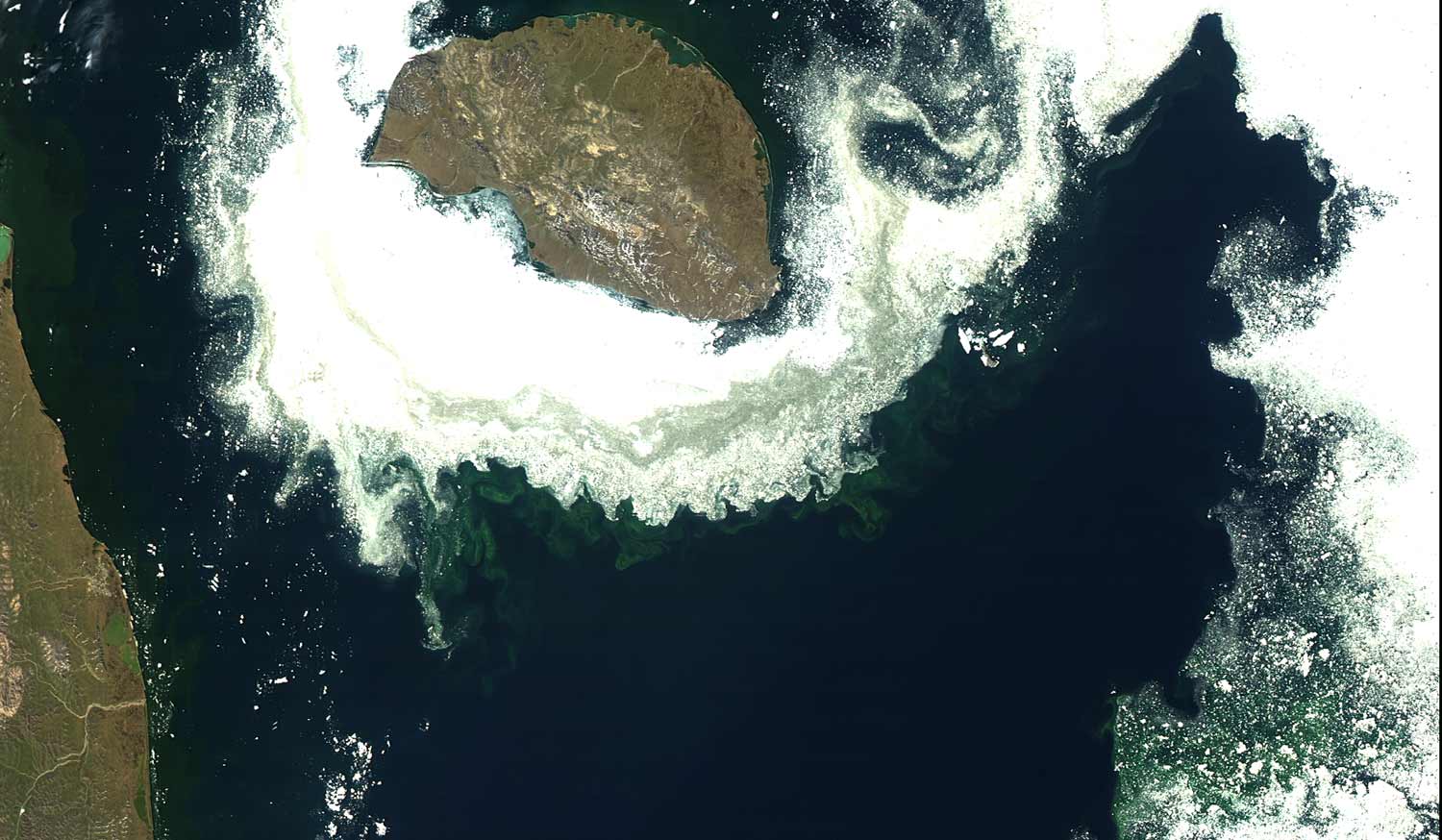
Study: Diminishing Sea Ice is Increasing the Size of Arctic Ocean Food Web Base
Net primary productivity in Arctic Ocean increased 47 percent in past two decades
By:
- Robert Monroe
Media Contact:
- Robert Monroe - scrippsnews@ucsd.edu
- Mario Aguilera - maguilera@ucsd.edu
Published Date
By:
- Robert Monroe
Share This:
Article Content

phytoplankton ice-edge bloom near Wrangel Island between the Chukchi and East Siberian seas. The image was processed by M. Kahru from the data recorded by NASA MODIS sensor on Aqua satellite on July 5, 2007.
Researchers at Scripps Institution of Oceanography at the University of California San Diego and colleagues analyzed Arctic Ocean satellite data from a 19-year period and found that the amount of biomass production at the base of the food web has increased 47 percent since 1997.
The researchers led by Scripps scientist Mati Kahru attributed the increase in net primary productivity, a conversion of carbon dioxide into more complex organic compounds, to a dramatic increase in the open water area that is inversely related to the area of the Arctic Ocean that is covered with ice in spring and summer.
Changes have also accrued in the timing of the productive season. The start time of the period of high primary productivity in the northern Barents Sea, for example, has advanced by roughly three days per year, beginning earlier in spring. There were 80 ice-free days there in 1979 compared to 289 ice-free days in 2015.
Results of the NASA-funded study “Effects of sea ice cover on satellite-detected primary production in the Arctic ocean,” appear Nov. 23 in the Royal Society journal Biology Letters. Co-authors included Zhongping Lee of the University of Massachusetts, Greg Mitchell of Scripps, and Cynthia Nevison of the University of Colorado, Boulder.
Primary production is the creation of chemical energy by algae and other phytoplankton through photosynthesis. It also includes similar activities by some chemosynthetic organisms and is the action that initiates food webs in the ocean and on land. When a portion of the chemical energy that algae and plants use for respiration is removed, the remainder is termed net primary production. Measures of net primary production reveal the rate that biomass accumulates in ecosystems.
In the Arctic Ocean, the retreat of sea ice allows photosynthesizing organisms access to sunlight, one of the raw materials needed to create energy, for a greater portion of the year.
Satellites can estimate the amount of primary productivity in the ocean by observing the color of the ocean surface, which indicates how much chlorophyll is in the water. A decade ago, Stanford University researcher Kevin Arrigoused satellite data to report a significant increase in net primary production, but the result then was met with skepticism as the satellite algorithm was susceptible to bias due to dissolved organic matter in the ocean.
To create this new estimate of primary productivity, Kahru’s team used a more advanced algorithm that separated light absorption by phytoplankton from that of other matter like detritus and colored dissolved organic matter. The result supported Arrigo’s paper published in 2008. The increase of 47 percent in primary productivity was derived from a comparison of 1998-2006 to 2007-2015, but the researchers also found that primary production leveled off after 2011. In fact, the researchers note, the amount of productivity in the open water area of the Arctic Ocean has dropped in recent years, likely being limited by the availability of nutrients.
The authors note that the trend may have consequences for Arctic food webs, but specific implications were not part of the scope of the study.
Share This:
You May Also Like
Stay in the Know
Keep up with all the latest from UC San Diego. Subscribe to the newsletter today.


